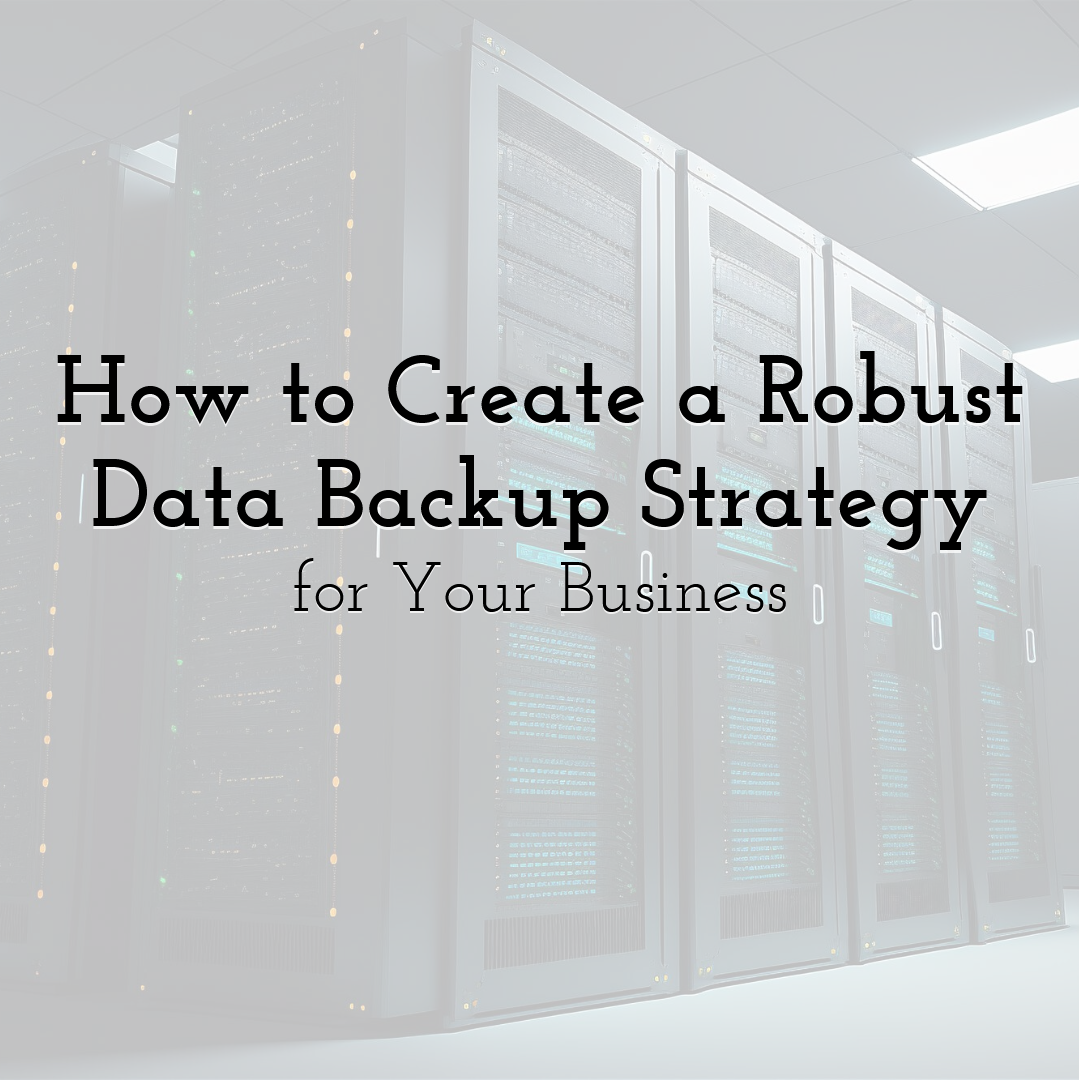How to Create a Robust Data Backup Strategy for Your Business

In today’s digital economy, data is the backbone of nearly every business operation. From client records and marketing assets to financial reports and operational processes, the loss of critical data can result in downtime, reputational harm, and regulatory penalties. Whether it’s a ransomware attack, accidental deletion, or natural disaster, data loss is not a matter of if, but when.
That’s why building a strong data backup strategy isn’t just smart—it’s essential for long-term business resilience. This guide walks you through creating a robust, layered backup approach that protects your most valuable information and ensures a fast recovery when disaster strikes.
Understand the Threat Landscape

Before diving into solutions, it’s important to recognize the variety of threats businesses face. Hardware failures still account for a significant portion of data loss incidents. Cyberattacks—particularly ransomware—continue to surge, often encrypting data and demanding payment for its return. Even well-meaning employees can unintentionally delete files or overwrite key documents.
Relying solely on cloud storage or local drives is no longer enough. A modern backup strategy must account for all these variables, combining redundancy with accessibility and security.
Define the Essentials: What, When, and Where

A successful backup plan starts with clarity:
- • What should be backed up? Not all data needs the same level of protection. Start by identifying mission-critical data—customer databases, financial records, creative assets, internal documentation—and assign tiers of priority.
- • How often should backups occur? The frequency should match how quickly your data changes. Real-time backups may be needed for transactional systems, while daily or weekly snapshots might suffice for static records.
- • Where should backups be stored? Consider a hybrid setup combining local and remote locations to protect against multiple failure points.
Embrace Redundancy with Offsite Storage

One of the most important principles of data protection is redundancy: keeping multiple copies of your data in separate, secure locations. While cloud backups are useful, they aren't foolproof. Cloud platforms can suffer outages, and cyberattacks can compromise even supposedly secure environments.
That’s why many organizations incorporate secure off-site storage into their backup strategy. By physically storing encrypted backups at a remote facility, businesses create an added layer of protection that’s insulated from on-premises threats like fire, theft, or system failure. Offsite storage is also particularly useful for satisfying compliance requirements, such as chain-of-custody or data retention regulations.
When evaluating an off-site solution, look for providers with 24/7 surveillance and access controls, temperature-controlled environments, secure transport logistics, and regular rotation schedules.
Together, these features ensure that even in a worst-case scenario, your data remains intact and recoverable.
Select the Right Tools for Your Needs

Not all backup tools are created equal. The best solution depends on your business size, industry, and specific data needs. For small teams, automated cloud backup services like Backblaze or Carbonite offer simplicity. Larger organizations may prefer enterprise-grade tools like Veeam or Acronis that allow greater customization and control.
Key features to prioritize:
- • Automation – Minimize human error by scheduling backups.
- • Encryption – Secure data in transit and at rest.
- • Versioning – Restore previous versions of files when needed.
- • Scalability – Ensure your system can grow with your business.
Also, think about how your creative assets are protected. For example, if your business uses Pixteller to design branded graphics or social media visuals, make sure those assets are included in your backup protocols, especially when collaborating across teams or managing client libraries.
Test and Audit Your Backup Systems

Backups are only as good as your ability to restore them. Too often, businesses assume their systems are working—until they discover otherwise during a crisis. That’s why regular testing and audits are critical.
At a minimum, schedule quarterly restore tests to ensure data can be accessed quickly and accurately. Use metrics like:
- • Recovery Point Objective (RPO): How much data can you afford to lose?
- • Recovery Time Objective (RTO): How quickly do you need to be back online?
Additionally, document your processes and ensure team members know how to trigger a restore operation. This saves valuable time during emergencies and reduces dependence on a single IT administrator.
Account for Compliance and Legal Responsibilities

In industries like healthcare, finance, and legal services, data protection is not just best practice—it’s the law. Regulations such as HIPAA, GDPR, and FINRA impose strict standards on how data is stored, accessed, and backed up.
Secure off-site storage plays a major role here, offering documented controls and retention tracking that cloud-only solutions may lack. Ensure your backup systems support retention policies based on jurisdiction, encryption standards that meet or exceed legal requirements, and clear audit trails and access logs.
Failing to meet these requirements can lead to fines or legal action—an avoidable risk with the right strategy in place.
Final Thoughts: A Proactive Mindset Pays Off
Data loss can cripple a business. But with a well-designed backup strategy, you’ll be positioned to recover quickly and maintain trust with clients, partners, and stakeholders.
A robust plan incorporates multiple backup locations (local, cloud, and secure off-site storage); automated tools that run with minimal intervention; regular testing and clear protocols for fast recovery; and compliance-conscious solutions that stand up to legal scrutiny.
If it’s been a while since your last data audit—or if you’ve never created a formal backup plan—now is the time. Start with a risk assessment, define your critical data, and explore how hybrid storage options can safeguard your business. You don’t need to wait for disaster to strike to build resilience. A few proactive steps today could make all the difference tomorrow.
Until next time, Be creative! - Pix'sTory
